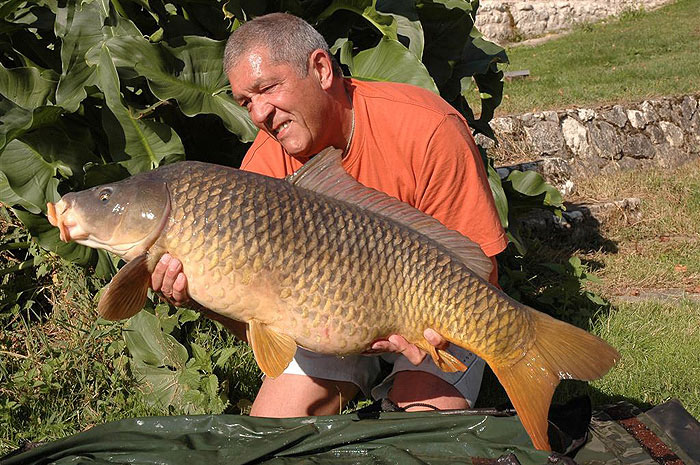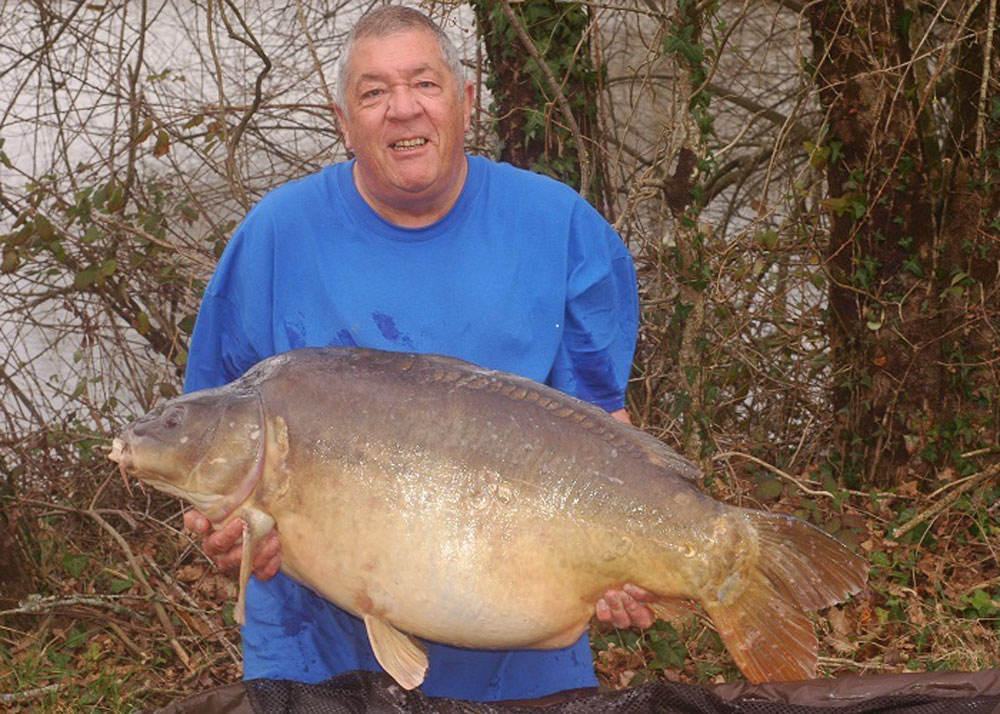For the most part, I tend to keep things simple as far as rigs are concerned, but at the same time, I realise that there is no ‘one rig fits all’ solution to the choice of rig. In fact, while I consider that I have a pretty fair knowledge of modern rigs I refuse to get carried away by the sometimes ridiculous cobbled together pieces of garbage that some folk seem to think is the be all and end all of rig development and technology.
To me a rig is the final part of the jigsaw that we all need to complete before we catch carp on a regular basis. Show me a carp man that is blanking and I will take a pound to a pinch of brown stuff that the first thing he will blame will be his rig. If I find myself blanking it won’t be because I have got a dodgy rig at the business end, it’ll be because I am in the wrong place! Nine times out of ten when you are not getting takes it is more to do with poor location than poor rig, but many anglers make the mistake of blaming their rig above all else, refusing to acknowledge their weaknesses in other areas of their fishing.

Whenever I read a post on the forum about some new wonder rig that has recently featured in one of the mags, I shake my head in wonder at the sheer naivety of many carp anglers. The one thing missing in all the discussion that follows is the subject of bait. Nobody ever seems to realise that there exists a close (and I would say, inevitable) relationship between bait and rig (photo 1). I have felt for some time that the two are inseparable and that belief has been the cornerstone of my approach for the past two decades (photo 2). However, in the modern era it appears to me that the rig is king and the bait an also-ran, a situation I consider to be greatly flawed.

Photo 1

Photo 2
There exists a close relationship between bait and rig. This inevitable relationship has been the cornerstone of my approach for the past two decades, as it has of many well-respected carp men.
A rig is only as good as the bait it is attached to. The more a fish feels it needs to eat your bait the more likely it is to make a mistake on the hook-bait and the less likely it is that you will need some super rig to fool it. (photo 3) A confident carp is a catchable carp and one that is turned on by the bait will make more mistake than one that has a ‘take or leave it’ attitude towards the bait. It is this aspect of giving them a food bait that they have almost got to have that has, I believe, played such a major part in my successes over the years (photo 4)

Photo 3
A confident carp is a catchable carp and one that is turned on by the bait will make more mistake than one that has a ‘take or leave it’ attitude towards the bait.

Photo 4
A confident carp is a catchable carp. Here a large mirror arrives over a bait carpet prior to really feeding hard. Within 5 minutes the fish was obscured by silt.
Whenever possible try to find a water that allows you to look in on carp. Watch them feed and notice how feeding activity differs from one bait to another. Note how they approach a carpet of bait and see how they react to a rig. Being able to watch carp in their natural world is a massive edge as far as I am concerned, as I can make any necessary tweaks to a rig before I go out onto the bigger waters where you need to rely on rig effectiveness to succeed. Watching them feed and seeing how they react to certain rigs and presentations takes away a lot of the guesswork and allows confidence to bloom (photo 5).
Many carp anglers have been brainwashed by the magazines into thinking that carp are some kind of mythical, uncatchable beast with the mental powers of Stephen Hawking. In fact they have a brain the size of a pea and just like any creature in the natural world they need to feed in order to live. Seeing how carp approach a bait carpet can often astonish the newcomer to carp fishing, who may well have preconceived ideas about their supposedly super-shy, mega-cautious and deeply suspicious quarry. However, once they have witnessed the kind of confident, aggressive and competitive feeding by carp that have really got their heads down they never forget it, and will soon realise that when carp really want a bait they are anything BUT shy, cautious or suspicious!
This is where the bait aspect of carp fishing enters the picture. It is a real eye opener to see fish feeding on a bait to which they are indifferent and then comparing that activity with carp that are munching on a bait they really want to eat and in which they have full confidence. If the carp want the bait badly enough to be competing for every mouthful they are unlikely to be less cautious. On the other hand, if the bait isn’t truly grabbing the carp’s attention, they may feel more suspicious about it (photo 6).
It is often stated that hard pressured carp are rig shy but it this really the case? I wonder how many anglers who offer this argument are using inferior bait/bait carpets. Might this not account for their poor results? I am sure in my own mind that truly rig shy carp are a figment of anglers’ imagination. Yes, a carp may be able to identify the hookbait from the way it behaves but this doesn’t mean it doesn’t pick it up. From my own observations I have watched carp pick up a hookbait a dozen or more times without showing any sign of suspicion. What does this tell me? That the carp isn’t shy of the rig/hooklink/lead weight etc.! It also tells me that the rig is not working as effectively as it could.
Too often we accept what we think might be happening as gospel without confirming what is actually happening with our own eyes. Now I accept that not everyone has the opportunity to look in on carp but I am sure that if most of you put your mind to it you could find a lake where some degree of up close and personal observation is possible. After all, if I can watch them in one of the hardest Home Counties waters in the land I am sure you can find one nearer to home.
As I proposed at the beginning, it is my contention that rigs and bait are inseparable. The best rig is the world will be less effective if you put a duff hookbait on it and by the same token, the best bait in the world will not produce the goods if your rig is rubbish. So where is the happy medium we need to reach to maximize both aspects of the game? I believe it starts with the bait and the presentation. They are equally important one to the other so let’s look at how we can achieve the most effective presentation when confronted with some of carp angling’s everyday situations.
Once you have the bait sorted out to the extent where it is as irresistible as possible to the carp, the rig now comes to the fore. When I see the latest super-rig in the magazines I am amazed at the inventiveness of the guy who thought that one up. On the other hand I usually ask myself, ‘Just how really necessary is that?’ Sometimes I can’t help but wonder if the rig has truly come about out of necessity or is just the result of a long afternoon’s cogitation and invention.
There are very few what I would call really gifted technical carp anglers writing in the magazines these days. When I need inspiration I don’t turn to the pages of the modern magazines, instead I go back over what has already been written (and possibly forgotten about) by some of the most consistent carp catchers around; guys like Brian Skoyles, Bill Cottam, Jim Gibbinson, Julian Cundiff and Tim Paisley. These guys talk and write about presentation with refreshing frankness, stating their preference for simplicity over complication; for actual effectiveness over assumed effectiveness. Read Bill Cottam’ s latest book and see for yourself just how meticulously he sets his traps, getting his presentation right every time. Bill is without doubt one of the most successful catchers of huge carp in Europe and is respected for his no-nonsense approach to rigs (photo 7). You won’t find reams of technical jargon-filled pages in his book. Just simple no-nonsense advice on how to maximize rig efficiency. Mind you, if you took away his Super Nova he’d be heart broken.
You won’t find reams of technical jargon-filled pages in his book. Just simple no-nonsense advice on how to maximize rig efficiency. Mind you, if you took away his Super Nova he’d be heart broken (photo 8).
I think too many carp anglers of today have forgotten the debt they owe to the guys who developed what so many now take for granted. Jim Gibbinson’ s Line Aligner was a huge step forward in rig development, and Harry Haskell’s original combi rig has brought about a revolution in rig technology with the now widespread use of coated braids being almost taken for granted. There have really only been a few what I would call truly revolutionary rigs coming through in the past decade or so. I think Mike Kavanagh’s Multi Rig (photo 9) is arguably the most innovative, as it allows the angler to change not just the hook but the rig as a whole in just a few seconds.
Frank Warwick’s development of the Short Helicopter Rig (photo 10) (now more commonly as the Chod Rig) is another major development on a theme, allowing a pop-ups presentation for all types of lakebed, weed bed and silt bed.
Where rig development would be if it had not been for the original thinkers of the rig world I cannot imagine. Without materials such as Snake Skin, Multi-Strand, Merlin, Super Nova and Super Mantis to tickle the inventive senses of some of the guys mentioned in this article, I doubt if carp fishing would have become as popular as it is today. It would be a darn sight harder for a start! These days you cannot open a carp magazine or watch a carp fishing DVD or read a carp fishing book without coming across frequent references to hooklink materials that we now take for granted…Imagine what carp fishing would be like without them…I, for one, simply cannot (photo 11)!

Photo 5
Watching carp feed. See how the feeding activity has completely scoured the lakebed of silt and weed.

Photo 6
If the carp want the bait badly enough to be competing for every mouthful they are unlikely to be less cautious.

Photo 7
Bill Cottam is without doubt one of the most successful catchers of huge carp in Europe and highly respected for his no-nonsense approach to rigs.

Photo 8
Some of Bills pop-up rigs. If you took away his Super Nova he’d be heart-broken.

Photo 9
Mike Kavanagh’s Multi Rig is one of the most innovative.

Photo 10
Frank Warwick’s Short Silt Rig (I hate the name chod).

Photo 11
I cannot imagine life without Super Mantis!
Ken Townley.




